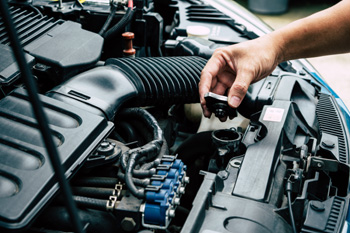Why Ignoring Small Noises Can Lead to Big Repair Bills
When it comes to car troubles, small, unusual noises are often the first sign that something isn’t quite right. Unfortunately, many drivers dismiss these sounds, hoping they’ll go away on their own. However, ignoring those minor squeaks, clunks, or rattles could lead to more significant and costly repairs down the road. Here’s why paying attention to your car’s “language” is essential.

1. Small Problems Can Escalate Quickly
A faint squeal from your brakes might not seem urgent, but it could signal worn brake pads. Left unaddressed, this minor issue can damage the rotors, leading to a much more expensive repair. Similarly, a slight rattle in the engine may indicate a loose component, which could break free and cause severe damage if ignored.
2. Early Repairs Save Money
Catching problems early typically involves simpler, less expensive fixes. For example, replacing a loose belt is a quick and affordable job. If that same belt snaps, it can damage surrounding components, leading to a costly chain reaction of repairs. Routine attention to small noises can save you from significant expenses later.
3. Your Safety Could Be at Risk
Some noises signal issues that directly affect your safety. A clicking sound when turning, for example, may indicate a failing CV joint, which is crucial for steering and control. Ignoring it could lead to complete joint failure, putting you and your passengers at risk.
4. Noises Can Affect Other Components
Your vehicle is a complex system where all parts work together. A problem in one area can stress other components. For instance, a loose exhaust component might seem harmless, but the vibration can damage mounting brackets, sensors, or even the catalytic converter.
5. Diagnosis is Easier When Problems are Small
Mechanics can diagnose and fix issues more efficiently when the problem is in its early stages. Once damage spreads or worsens, identifying the root cause becomes more challenging, often requiring more time, labor, and expense.
Common Noises You Shouldn’t Ignore
- Squealing or grinding brakes: Likely worn pads or rotor issues.
- Clunking when going over bumps: Could be suspension or shock problems.
- Rattling under the hood: Loose or failing components.
- Humming or whining: Potential tire, wheel bearing, or transmission concerns.
- Knocking from the engine: A sign of serious internal damage that needs immediate attention.
What to Do When You Hear Unusual Noises
- Don’t Ignore It: Pay attention to when the noise occurs (e.g., while accelerating, braking, or idling).
- Document It: Note the type of sound and its frequency.
- Seek Professional Help: Bring your vehicle to a trusted mechanic for an inspection.
Final Thoughts
Your car’s unusual noises are its way of asking for help. By addressing them early, you save money, prevent inconvenience, and ensure your safety on the road. At [Your Auto Shop Name], we specialize in diagnosing and resolving automotive issues, big or small. If you’ve noticed an unusual sound, don’t wait—schedule an appointment today.
Protect your car and your wallet by listening to what your vehicle is telling you.
Lim’s Auto Body is a full service auto body and mechanical repair shop locally owned and operated in Largo, Florida. For more information, go to our web site www.limsautobody.com or call (727) 422-3232.

